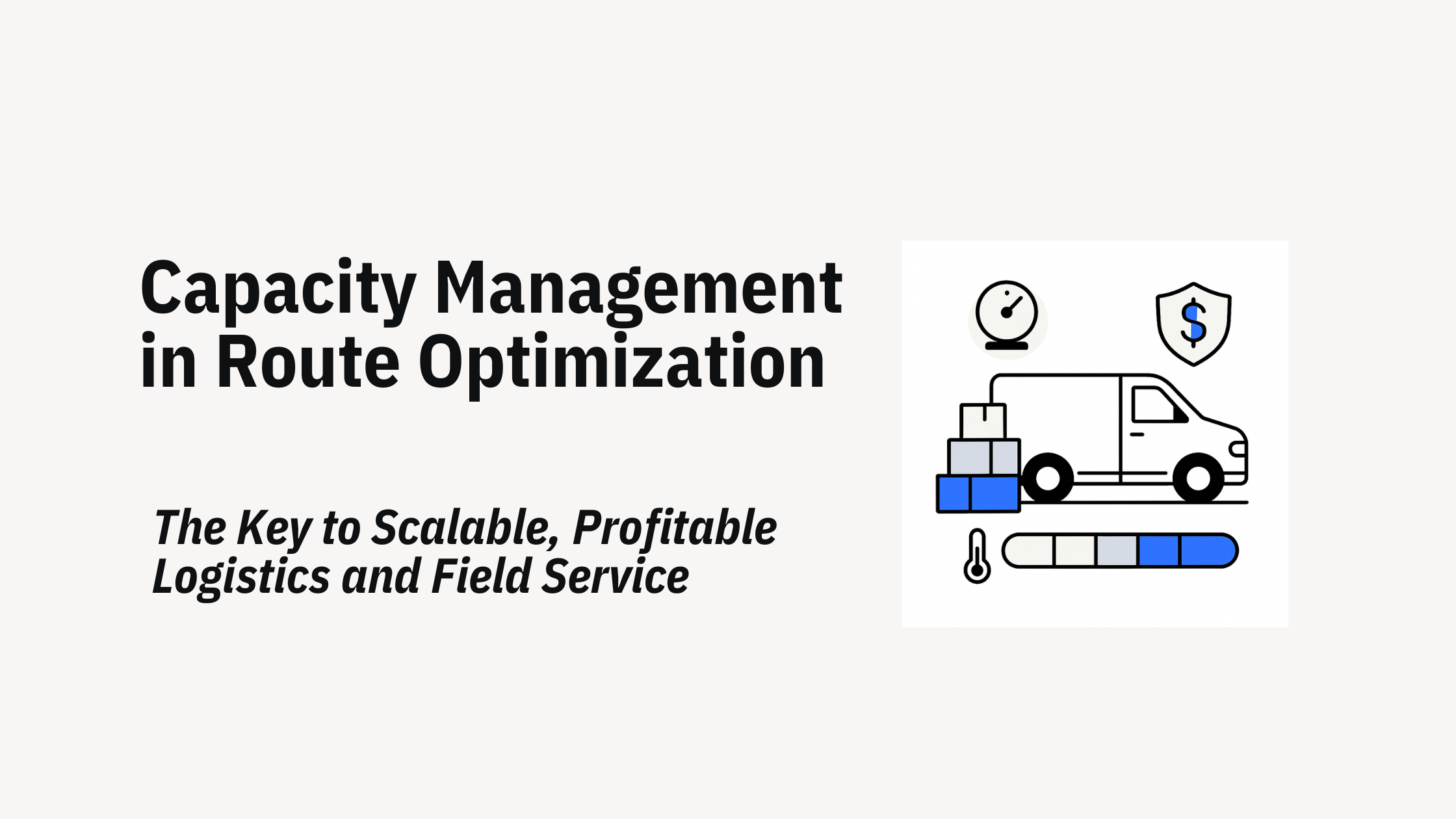In logistics and field operations, one thing is certain: the plan will change. A new delivery comes in unexpectedly. A caregiver gets delayed at a previous appointment. Traffic grinds to a halt. A construction site requests materials urgently. A customer cancels at the last minute.

Most operational teams are still working with static daily plans built hours or even days earlier, making reactive firefighting the norm rather than seamless responsiveness. And this will incur extra costs:
Real-time scheduling enables routes and assignments to adapt continuously throughout the day. Rather than rebuilding schedules from scratch when changes occur, the Solvice API uses initial-state optimization to update plans without disrupting work that has already started. This API-first approach integrates directly into existing systems, allowing you to add dynamic routing capabilities without rebuilding your operational stack.
The business impact is measurable. According to McKinsey, logistics operations that embrace dynamic planning can improve fleet productivity by 20–30% and significantly reduce costs. Organizations implementing real-time scheduling report reduced cost-per-delivery, higher fleet utilization, and improved SLA compliance.
Real-time scheduling means routes and resource assignments continuously adapt to current conditions. With Solvice:
The Solvice Route Optimization API provides an optimization engine built for continuous adaptation. After creating an initial schedule, your application can trigger recalculation at any moment—when new jobs arrive, appointments are canceled, or vehicles become unavailable.
The Solvice API is built for continuous optimization through a two-phase approach:
Start each period (day, week, …) with comprehensive route optimization using the asynchronous solve endpoint. This creates the foundation schedule that accounts for all known jobs, vehicle capabilities, time windows, and constraints.
Throughout the day, use the synchronous solve endpoint to update the schedule based on the current operational state rapidly.
The API supports initial-state preservation—you can provide the current status of in-progress routes using the initialResource and initialArrival fields. This allows the algorithm to focus only on what needs to change rather than rebuilding the entire schedule, avoiding unnecessary disruption to work that's already started.
You maintain full control over schedule stability through planned constraints:
The API evaluates vehicle status, remaining capacity, time windows, priorities, and skill requirements, returning an updated schedule in under 5 seconds. This combination of speed, state preservation, and fine-grained control makes it straightforward to build real-time dispatch capabilities directly into your platform.
Scenario: A customer requests a new pick-up order mid-route.
Result: Real-time scheduling dispatches the closest driver with sufficient capacity, reducing pick-up time by up to 25%.
Scenario: An urgent non-emergency medical transport request is added for a high-priority patient.
Result: The API reallocates drivers or caregivers based on current availability and travel time, reducing wait times and improving care outcomes.
Scenario: A technician finishes a job early, or another task is delayed.
Result: The API reassigns the next job dynamically to maximize technician utilization and reduce idle time.
Scenario: Unexpected traffic delays block access to a site.
Result: Schedules are adjusted automatically, and fleets are redirected to maintain service windows without manual dispatcher intervention.
Scenario: New ride requests arrive continuously.
Result: The optimization engine matches requests to drivers using the most efficient dispatch strategy, balancing wait times and driver utilization.
Organizations implementing real-time scheduling with optimization algorithms report consistent operational gains:
According to Gartner, over 50% of logistics organizations plan to invest in real-time visibility and dynamic optimization capabilities by 2025. Statista reports that the global on-demand delivery market is projected to exceed $600B by 2027, driven by consumer expectations for instant responsiveness.
Real-time scheduling forms the operational foundation for the next generation of logistics and service delivery. As organizations transition from manual decision-making toward intelligent automation, dynamic re-optimization becomes the core enabler of advanced capabilities:
When schedules can be recalculated instantly based on the latest state of jobs, vehicles, and constraints, dispatch decisions can be fully automated. Real-time optimization becomes the engine behind autonomous resource assignment and reassignment, eliminating the need for human intervention in routine dispatch decisions.
Disruptions such as delays, cancellations, or equipment failures trigger immediate recalculation, creating updated plans without human intervention. Real-time scheduling enables supply chains to adapt in motion—identifying issues and correcting course before they impact service-level agreements.
With sustainability mandates tightening globally, organizations need to minimize fuel usage and emissions at every operational moment. Dynamic route recalculation enables continuous selection of greener paths and maximizes vehicle utilization, reducing CO₂ emissions per job or kilometer.
When schedules update in real time, customers receive live ETAs, instant confirmations, and rapid rescheduling options. This enables more interactive, transparent, and premium service experiences that build trust and differentiate service quality.
As static planning becomes obsolete and always-adapting operations become standard, operational agility will determine competitive position. Real-time scheduling provides the infrastructure for automation, intelligence, and sustainability at scale.
The Solvice API provides comprehensive documentation for implementing real-time scheduling:
Technical Guide: Detailed implementation patterns for job insertion, cancellation handling, and resource unavailability
docs.solvice.io/guides/vrp/features/real-time-scheduling
API Explorer: Interactive environment for testing real-time scheduling scenarios with visual route updates
www.solvice.io/api-explorer
Integration Support: Questions about implementing real-time scheduling for your use case? Our team can provide architectural guidance and integration support.
Real-time scheduling transforms field operations from reactive firefighting to proactive, continuous optimization.


